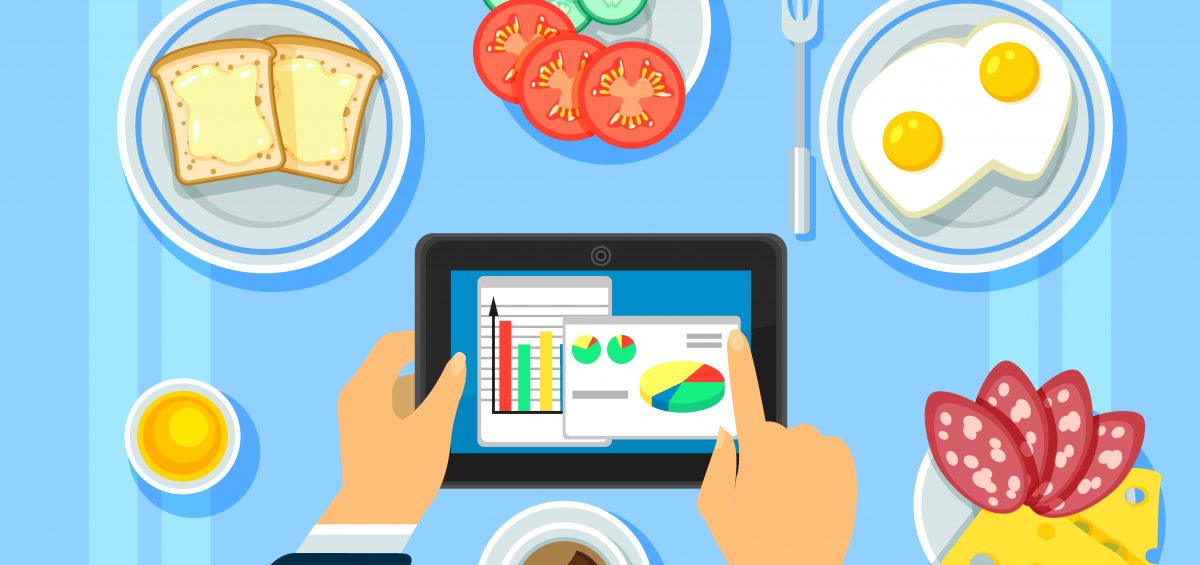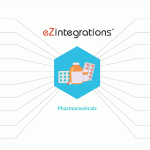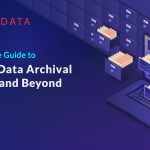Introduction
In today’s fast-paced and interconnected world, data has become the driving force behind innovation and transformation in various industries, including the food and beverage sector. The convergence of data analytics and culinary creativity has given rise to exciting advancements, shaping consumer preferences, sustainable practices, and culinary experiences. This blog will delve into the fascinating relationship between data and the food industry, uncovering how data-driven insights drive trends and revolutionize the culinary landscape.
Section 1: Data Cultivation – From Farm to Fork
In the modern agricultural landscape, data analytics plays a pivotal role in optimizing farming practices and ensuring sustainable food production. Precision agriculture leverages data from sensors, drones, and satellites to monitor soil quality, weather patterns, and crop health. By analyzing this data, farmers can make informed decisions on irrigation, fertilizer application, and pest control, leading to higher crop yields and reduced environmental impact. For instance, data-driven farming practices have enabled farmers to conserve water by up to 50% and decrease fertilizer usage, resulting in substantial cost savings and reduced carbon emissions.
Intelligent supply chain management is another critical aspect where data drives efficiency and waste reduction. Food distribution networks leverage real-time data to track inventory levels, monitor transportation conditions, and predict demand patterns accurately. As a result, companies can optimize logistics, minimize food spoilage, and improve food safety standards. Data-driven supply chains have proven instrumental in reducing food waste by up to 25%, contributing to sustainable business practices and environmental conservation.
Section 2: Savoring Data-Infused Culinary Creations
The culinary world embraces data analytics to develop innovative recipes that cater to evolving consumer tastes and dietary preferences. Food scientists and chefs harness data-driven insights to craft mouthwatering dishes with the perfect blend of flavors, textures, and nutritional value. For example, data analytics can help determine the ideal ratio of ingredients in a recipe to maximize nutritional content while enhancing the taste profile, contributing to healthier and more enticing meals.
Menu engineering has also experienced a transformation through data insights. Restaurants analyze customer data, feedback, and purchasing patterns to strategically design menus that appeal to their target audience. By identifying top-selling items and predicting customer preferences, businesses can create more profitable menus, boost customer satisfaction, and optimize their revenue streams. Some restaurants have reported up to a 15% increase in sales by implementing data-driven menu engineering strategies.
In the kitchen, data-driven technology optimizes cooking processes, ensuring consistency and quality in every dish. Connected kitchen appliances equipped with sensors and data analytics monitor cooking temperatures, cooking times, and ingredient measurements, leading to perfectly cooked dishes every time. Automation and data insights have streamlined kitchen operations, reducing human errors, and enhancing overall efficiency.
Section 3: Nourishing Sustainable Food Systems
Sustainability has become a central focus in the food industry, and data-driven decision-making plays a pivotal role in promoting environmentally conscious practices. Restaurants and food establishments are embracing sustainable kitchen practices through data analysis to minimize food waste, conserve energy, and reduce their ecological footprint.
Data analytics helps businesses identify inefficiencies in the supply chain that contribute to food waste. By tracking inventory levels, expiration dates, and consumption patterns, companies can optimize inventory management, reduce overstocking, and minimize food spoilage. The United Nations estimates that up to one-third of all food produced globally is wasted, and data-driven solutions offer the potential to significantly reduce this figure.
In the realm of agriculture, data-driven practices support eco-friendly farming methods. Precision agriculture allows farmers to adopt targeted approaches to pesticide and fertilizer application, reducing the use of harmful chemicals and promoting soil health. Sustainable farming practices not only contribute to a healthier ecosystem but also enhance the quality and safety of the food produced.
Section 4: Nourishing Success: Data-Driven Trends in the Food Industry
The food industry is ever-evolving, shaped by dynamic consumer preferences, cultural influences, and technological advancements. Data-driven trends play a pivotal role in guiding businesses towards success, enabling them to adapt and innovate to meet the ever-changing demands of their customers. Let’s explore some of the key data-driven trends that are revolutionizing the food and beverage sector:
1. Personalization on the Plate
Data analytics has unlocked the potential for personalized dining experiences, allowing businesses to cater to individual preferences and dietary needs. With data-driven insights into customer preferences, dietary restrictions, and allergens, restaurants can offer personalized menu recommendations, ensuring every guest enjoys a delightful and tailored culinary journey. Personalization not only enhances customer satisfaction but also fosters brand loyalty, as customers feel valued and understood by businesses.
2. The Rise of Plant-Based Diets
Data analysis has brought the surge of plant-based diets into focus, revealing a growing consumer interest in sustainable and health-conscious food choices. With data-driven insights, food companies can develop innovative plant-based products that replicate the flavors and textures of traditional dishes, appealing to both vegans and flexitarians. This trend aligns with the broader shift towards environmental sustainability and ethical considerations in the food industry.
3. Locally Sourced and Sustainable Ingredients
Consumers today are increasingly conscious of the environmental impact of their food choices. Data-driven trends highlight the significance of locally sourced and sustainable ingredients. By leveraging data analytics, businesses can identify local suppliers, track food miles, and promote transparency in sourcing practices. Embracing sustainable ingredients not only resonates with eco-conscious consumers but also contributes to reducing the carbon footprint of the food supply chain.
4. Snacking Revolution
Data-driven insights have shed light on the changing snacking habits of consumers. As people adopt more flexible eating patterns, data analysis reveals the rising popularity of healthier and more diverse snack options. Food companies can use this information to develop innovative and nutritious snacks that cater to the busy lifestyles of consumers. Understanding snacking trends can give businesses a competitive edge in capturing a significant market share.
5. Global Flavors and Fusion Cuisine
Data analytics unveils the rising fascination with global flavors and fusion cuisine. As consumers become more adventurous with their palates, data-driven trends indicate an increased interest in exotic tastes and culinary fusions from different cultures. Restaurants can leverage this trend to experiment with creative dishes that combine diverse flavors and ingredients, creating a unique dining experience that captures the essence of globalization.
6. Technology-Enhanced Dining
The integration of technology in the dining experience is revolutionizing the food industry. Data-driven insights indicate a growing preference for contactless ordering, digital menus, and online delivery services. Restaurants can use data analytics to optimize their online presence, tailor marketing strategies, and enhance customer engagement through loyalty programs. Embracing technology-driven trends ensures businesses stay relevant in a digital-first era.
7. Smart Packaging and Food Waste Reduction
Data-driven approaches are also instrumental in addressing food waste challenges. Innovations in smart packaging leverage data to monitor food freshness, shelf life, and storage conditions, reducing the likelihood of premature spoilage. Data analytics can help food companies identify areas of waste in the supply chain, enabling them to implement proactive measures to minimize food loss and maximize resource efficiency.
Section 5: Brewing Success: Data in the Beverage Industry
Beyond the culinary realm, data analytics has permeated the beverage industry, driving innovation in craft brewing, winemaking, and mixology.
Craft breweries are leveraging data analytics to create unique and customized brews that cater to niche consumer preferences. By analyzing customer feedback and purchase patterns, breweries can develop new flavors and experiment with innovative brewing techniques. Data-driven craft brewing has empowered brewers to connect directly with their target audience, cultivating a loyal customer base through personalized experiences.
Winemakers are also harnessing the power of data to enhance vineyard management, optimize grape cultivation, and refine fermentation techniques. By analyzing climate data, soil composition, and grape characteristics, data-driven vineyards can create high-quality wines that reflect the unique terroir of their region.
In the world of mixology, data analytics is revolutionizing cocktail creation. Bars and lounges use data insights to identify trending flavor profiles and craft unique cocktails that resonate with customers. By experimenting with data-driven mixology, bartenders can create signature drinks that align with their customers’ preferences, driving customer loyalty and enhancing the overall drinking experience.
The Recipe for Success: Embrace Data with Bizdata
In conclusion, the integration of data and the food and beverage industry is a recipe for success. Goldfinch Analytics Advanced Analytics and eZintegrations are powerful tools that enable businesses to extract the full potential of their data, making data-driven decisions an everyday reality.
With Goldfinch Analytics, businesses can uncover invaluable insights, capitalize on trends, and make strategic choices to stay ahead of the competition. Moreover, Goldfinch Analytics‘s advanced analytics provide valuable insights into supply chain optimization, enabling food companies to reduce waste, streamline logistics, and maintain food safety standards. With precise analytics at their disposal, businesses can achieve better cost efficiencies while promoting sustainability.
eZintegrations simplifies data integration, providing seamless connectivity throughout the food supply chain and promoting efficiency and sustainability. For example, data from precision agriculture practices can seamlessly integrate with inventory management systems, allowing businesses to make informed decisions on purchasing and distribution.
In an era where data-driven decisions can make or break success, Bizdata’s solutions provide the competitive edge to thrive in the ever-changing world of food and beverage. Embrace the data-driven future with Bizdata and savor the sweet taste of success in the food industry.






